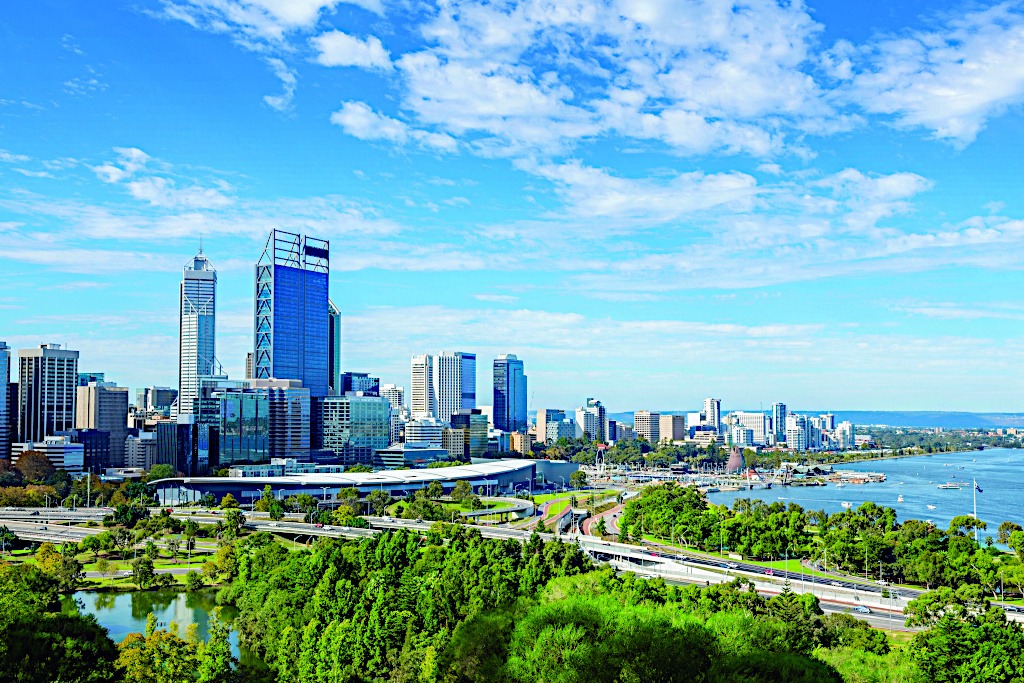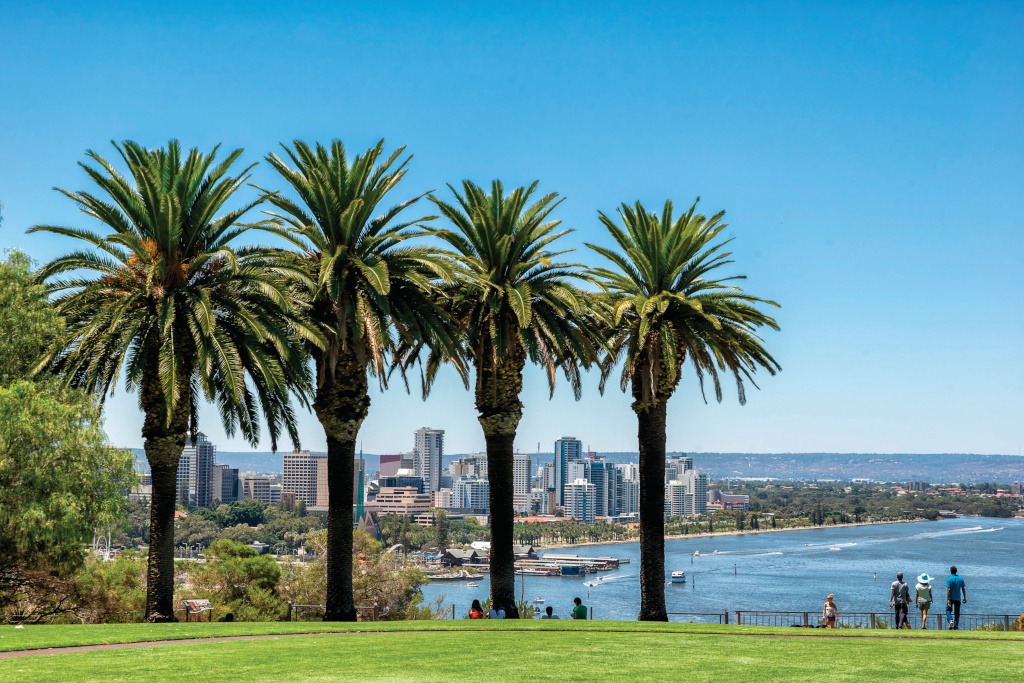The capital of Western Australia, Perth, is one of the most isolated major cities in the world, a distinction it shares along with Honolulu in Hawaii and Auckland in New Zealand. Perth’s remoteness has much to do with the fact that it is surrounded by some of the most inhospitable land on earth. Although the city and its environs enjoy a wonderful Mediterranean-style climate, go beyond the manicured parks and bountiful vineyards, and you’ll find that the vast open expanses of Western Australia (often abbreviated as WA) are predominantly arid, infertile, extremely hot, and sparsely populated. The other major Australian cities such as Sydney, Melbourne, and Brisbane can’t be considered neighbors, because they’re all thousands of dusty and desolate miles away in the east (Indonesia’s capital Jakarta is actually
closer; as is Dili, the capital of East Timor).
In spite of its geographical seclusion, Perth is far from being a lonely and inhospitable place. It is in fact one of the friendliest and most welcoming cities I’ve ever visited. And it’s no longer as inaccessible, because in March 2018 Qantas introduced a non-stop flight between Perth and London, the first regular passenger service to directly link Australia with Europe. With a flight time of around 16 hours, this 14,500km journey is currently the world’s third longest non-stop flight (launched in October 2018, Singapore Airlines new Singapore-Newark route is the longest, followed by Doha-Auckland operated by Qatar Airways).
Whatever route you take, it’s certain to be quicker than the journey made by the earliest settlers, who spent up to three months at sea to reach Australia. Back then it was a perilous voyage. Many people died en-route, or disembarked suffering from malnutrition, scurvy, dysentery, and fever—far more unpleasant than today’s ailments like jetlag, boredom, and concerns about the amount of legroom in coach.
As with the rest of Australia, the first people to arrive here were a mix of colonists and convicts, but population growth in WA was as stagnant as a swamp until gold was discovered in the 1890s. The ensuing gold rush led to a population explosion in WA: it doubled between 1891 and 1894, and continued to increase rapidly thereafter. Although many a hopeful prospector died from thirst and disease, others found unimaginable wealth beneath the harsh and searing sun, bringing a spirit of prosperity and opportunity to the region, a spirit that remains here to this day.

Perth Skyline
Perth is now said to be home to the highest number of self-made millionaires in the world per capita. This corner of Australia is therefore hip and cosmopolitan, with a thriving foodie scene, smart hotels, international designer boutiques, and vibrant nightlife, including several LGBTQ venues. Although you may not personally strike gold, everyone can share the bounty of the golden sun (Perth enjoys up to 3,000 hours of sunshine a year, more than any other Australian city).
Perth’s outdoor-loving residents have numerous alfresco spaces, parks, beaches, and hip urban villages to enjoy. Adjacent to downtown Perth on the banks of the Swan River is Elizabeth Quay. Named after Her Royal Highness, the Queen of England, this multi-million dollar riverside entertainment area opened in 2016 after redevelopment. Its centrepiece attraction is the Bell Tower, a striking copper and glass tower built especially to house the Swan Bells. Twelve of those bells have great historical and royal significance. Gifted to WA as part of the Australian bicentennial celebrations in 1988, they came from the church of St Martin-in-the-Fields in London’s Trafalgar Square and are the only set of royal bells known to have left England. Six additional bells were cast in recent years at a bell foundry in London, using metals mined in WA, altogether creating a 16-bell peal with two extra chromatic notes. Visitors to the Bell Tower can hear the bell-ringers practicing the ancient art of ‘change ringing,’ as well as participate in an interactive bell chiming demonstration.


